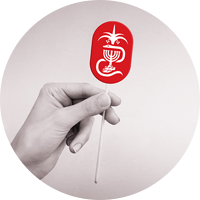“Non-steroidal anti-inflammatory drugs (NSAIDs) are known to produce antinociceptive effects mainly through peripheral COX-inhibition. Paracetamol and dipyrone are different from classical NSAIDs, because they exert weak anti-inflammatory activity; mechanisms other than peripheral COX inhibition appear to play role in their antinociceptive actions. In this review, we specified classical NSAIDs, paracetamol and dipyrone as “non-opioid analgesics” and discussed the mechanisms mediating participation of the endocannabinoid system in the antinociceptive effects of these analgesics. Non-opioid analgesics and their metabolites may activate cannabinoid receptors. In addition, several mechanisms are implicated in the elevation of endocannabinoid levels following administration of non-opioid analgesics. Of these, reduction of endocannabinoid degradation via FAAH and/or COX-2 inhibition, accumulation of arachidonic acid to endocannabinoid biosynthesis following COX inhibition, inhibition of cellular uptake of endocannabinoids directly or following inhibition of nitric oxide synthase production, and induction of endocannabinoid release are among the proposed mechanisms.”
https://pubmed.ncbi.nlm.nih.gov/32551466/
http://balkanmedicaljournal.org/uploads/pdf/pdf_BMJ_2226.pdf

 “Cannabidiol (
“Cannabidiol ( “Medical cannabis (MC) treatment for migraine is practically emerging, although sufficient clinical data are not available for this indication. This cross-sectional questionnaire-based study aimed to investigate the associations between phytocannabinoid treatment and migraine frequency.
“Medical cannabis (MC) treatment for migraine is practically emerging, although sufficient clinical data are not available for this indication. This cross-sectional questionnaire-based study aimed to investigate the associations between phytocannabinoid treatment and migraine frequency. “Growing evidence recognises cannabinoid receptors as potential therapeutic targets for pain. Consequently, there is increasing interest in developing cannabinoid receptor agonists for treating pain.
“Growing evidence recognises cannabinoid receptors as potential therapeutic targets for pain. Consequently, there is increasing interest in developing cannabinoid receptor agonists for treating pain. “Cannabidiol (CBD), the major non-psychoactive constituent of Cannabis sativa L., has gained traction as a potential treatment for intractable chronic pain in many conditions. Clinical evidence suggests that CBD provides therapeutic benefit in certain forms of epilepsy and imparts analgesia in certain conditions, and improves quality of life.
“Cannabidiol (CBD), the major non-psychoactive constituent of Cannabis sativa L., has gained traction as a potential treatment for intractable chronic pain in many conditions. Clinical evidence suggests that CBD provides therapeutic benefit in certain forms of epilepsy and imparts analgesia in certain conditions, and improves quality of life.
 “Medical cannabis (MC) is becoming more and more popular among patients with chronic pain syndromes.
“Medical cannabis (MC) is becoming more and more popular among patients with chronic pain syndromes. “Few models exist that can control for placebo and expectancy effects commonly observed in clinical trials measuring ‘
“Few models exist that can control for placebo and expectancy effects commonly observed in clinical trials measuring ‘ “Two patient case reports are presented describing the use of cannabidiol (CBD) for the symptomatic relief of a lumbar compression fracture and in the mitigation of thoracic discomfort and dysesthesia secondary to a surgically resected meningioma.
“Two patient case reports are presented describing the use of cannabidiol (CBD) for the symptomatic relief of a lumbar compression fracture and in the mitigation of thoracic discomfort and dysesthesia secondary to a surgically resected meningioma. “Opioid prescriptions and abuse remain a significant national concern.
“Opioid prescriptions and abuse remain a significant national concern. “The demonstrated expression of endocannabinoid receptors in myofascial tissue suggested the role of fascia as a source and modulator of pain.
“The demonstrated expression of endocannabinoid receptors in myofascial tissue suggested the role of fascia as a source and modulator of pain.